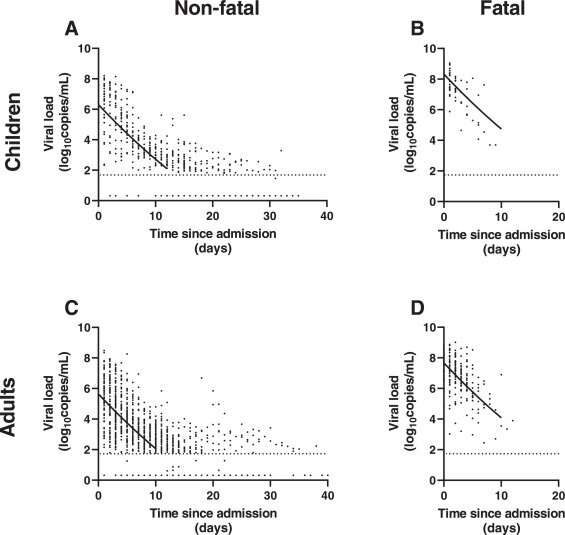Ebola may hit children harder and longer than adults, study suggests

A recent study on how Ebola affected children during an outbreak in the Democratic Republic of the Congo suggests children may be as susceptible to the disease as adults, despite often presenting with more subtle physical symptoms—vital information for doctors treating pediatric patients with the virulent disease today, and during potential outbreaks in the future.
"Any pediatrician would tell you that children are not little adults. Their bodies respond to infections differently," says University of Alberta researcher Michael Hawkes, an assistant professor in the Department of Pediatrics and senior author on the study.
"We're right in the middle of an Ebola outbreak in Uganda, and this information is of critical importance to managing the children currently hospitalized with Ebola in Uganda," he says.
Hawkes notes there is very little data available on the characteristics of Ebolavirus disease in children specifically. The researchers aimed to fill in that knowledge gap using medical data from the Kivu outbreak in Congo, which resulted in nearly 3,500 reported cases from 2018 to 2020.
For the study, researchers conducted a retrospective chart review of pediatric patients along with a comparison group of young adult patients. As Hawkes explains, since Ebolavirus outbreaks typically occur in low-resource settings, there often isn't much laboratory testing happening. The unique abundance of laboratory data from the DRC outbreak allowed the researchers to extract key findings from those charts and more comprehensively identify how the disease presents in children.
"Given the subtle presentations kids often have, or the lack of reporting of their subjective symptoms, we were curious to see if they had a similar severity in their lab findings that show their organs are truly affected by this disease," says Lindsey Kjaldgaard, a pediatric resident at the U of A and first author on the study. "We ended up concluding that this is truly the case."
The data showed that pediatric patients had a higher viral load at time of admission and a higher peak viral load. It also took more time for the virus to completely clear from their bloodstreams, leading to longer times in hospital.
"The fact that the viral load is higher in children speaks to an immune system that's not mature," says Hawkes, who is also a Stollery Science Lab Distinguished Researcher and member of the Women and Children's Health Research Institute. "If children are as vulnerable to Ebola as they are to other viral diseases, it's important to recognize that their viral load is higher."
The researchers also found that pediatric patients commonly had electrolyte imbalances and low blood sugar, two conditions that can cause neurological and cardiac complications, and can even become life-threatening if not treated.
"Sometimes kids might get missed because they aren't able to draw attention to organ systems or things that are actually being impacted by the disease," says Kjaldgaard. "Highlighting the pediatric labs, we're able to look further into that and uncover some of those things that might otherwise get missed, whereas adults may be more able to report those symptoms."
Study co-author Kasereka Masumbuko Claude, a Ph.D. student in the School of Public Health, will look in more detail at the different organ systems affected, synthesizing and gleaning even more context for what's going on in the bodies of young patients.
The more information doctors have about symptoms or signs to monitor, the better they will be able to address health issues as they arise, in turn lowering mortality rates among children with Ebola, Hawkes says.
The treatment-focused perspective is also a marked change from previous approaches to the disease, he adds.
"Previous Ebola outbreaks have been focused on containment—isolate the sick patients and make sure they don't pass it on to somebody else. Since the western African outbreak which killed 11,000 people, the focus has been shifting to, let's actually treat the patients and try to get them better instead of just isolating them."
The work is published in the journal eClinicalMedicine.
More information: Lindsey Kjaldgaard et al, Virus kinetics and biochemical derangements among children with Ebolavirus disease, eClinicalMedicine (2022). DOI: 10.1016/j.eclinm.2022.101638


















